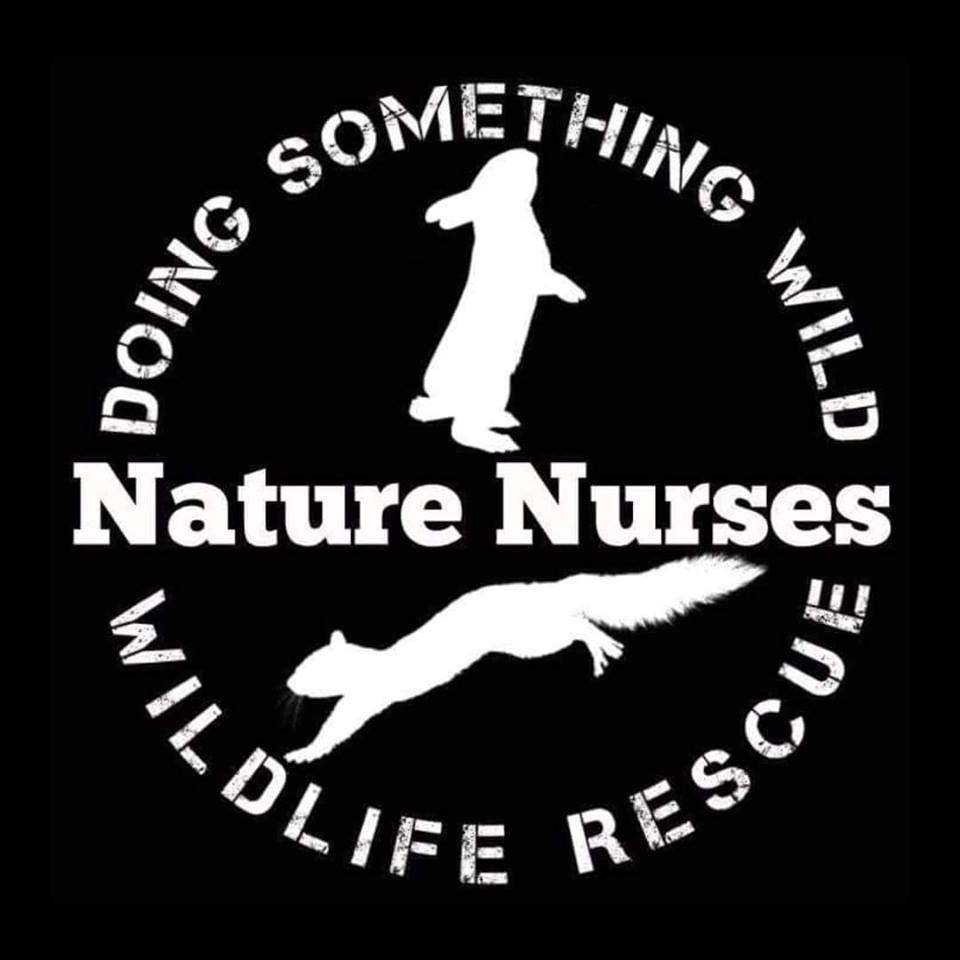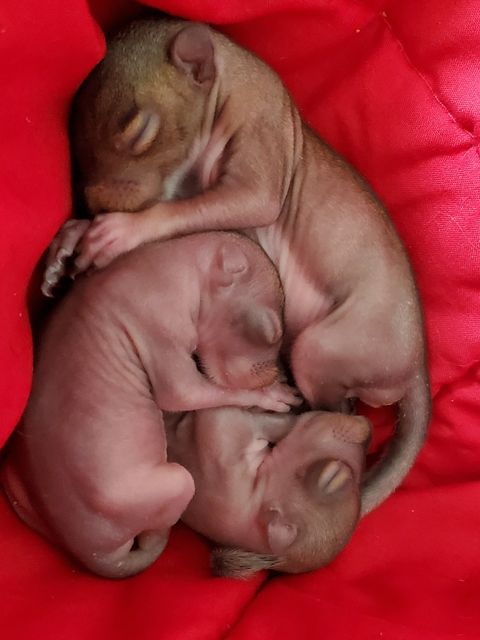Squirrels are America’s favorite wild animals to watch, feed, and be entertained by. Simultaneously, they are also hated by gardeners, bird feeders, dogs, cats, and grumpy old men everywhere. Some people love to hate squirrels! There are devices to deter squirrels from eating your birdseed, and other devices designed to entertainingly feed the squirrels as well. Squirrels tend to always be in a hurry, always have an invisible list of many errands to run, and really don’t have time to mess with us humans. Frequently though, because of their sheer population size, we encounter our squirrels in the worst ways and find ourselves in situations where we have to solve squirrel issues. Here are our most frequent squirrel related wildlife calls.
If you answered NO to all the questions above, then reuniting with the mother should be attempted! Mother squirrels are absolutely the best at raising baby squirrels and often have a back-up nest location prepared. All attempts to reunite should be made!
IMPORTANT: An infant should never be left out to reunite after dark. Mom squirrels are diurnal, meaning they are only active during the day, so she will not be out overnight looking for her babies. This would leave the infants exposed to the outside elements and predators. Babies should also never be left outside if temperatures drop below freezing. They cannot thermoregulate, or maintain their body temperature, at this age and will need to be brought to a temperature regulated area.
1) Contain the baby in a box or fabric hat where it can not crawl out and fall or get lost. Place a soft cloth under the infant, keeping him as comfy as possible. An old tee shirt, washcloth or baby blanket will do.
2) Provide a heat source if temperatures are below 85°F. These babies can not thermoregulate, or maintain their body temperature, so they can catch chill quickly and become hypothermic. Hypothermia can take a baby's life very quickly. If temperatures are below freezing babies cannot be left outside, they must be taken into a temperature controlled area. If the baby is not warmed, reuniting will likely fail as a mother squirrel will not retrieve a cold baby. Some ideas for a heat source include:
- Heating pad set to low
- Prepackaged chemical hand warmers
- Uncooked rice in a sock warmed in the microwave
- Potato wrapped in a sock warmed in a microwave
- Hot water bottle in a sock
Any heat source should not be put into direct contact with the infant, but placed under the cloth near the baby.
3)
It is important to leave the container with the infant/infants in the same area that they were found. This could be at the base of the tree that they fell from, nailed to the side of the tree, at the base of the house were the nest came from a gutter or in the building that it was found in. The baby should not be left in direct sunlight. You can shade the baby with a piece of cardboard over half the box or move it into the shade. If it is raining you can place the box on its side and keep the babies tucked inside. Get creative to keep the babies warm, dry and shaded!
4)
Give the mom plenty of time to retrieve her young. Stay away as much as possible, as mom will not come around if you are visible. With technology these days you can put a webcam on them, or simply watch from the window. It is truly a sight to see a mother's love when she comes to take her babies back to safety.
Special Considerations: If it is storming or close to dark, bring the babies inside. Keep them in a location where it is warm, dark and quiet. Place the babies back out for mom after the storm passes or early the next morning. Babies can go 18-24 hours without a meal.
Tools to help you draw mom in: There are plenty of videos on YouTube of squirrel infant distress calls. Turn your speaker up on your phone and play these sounds to alert mom that her baby could be in danger.
If mom was seen leaving a nest that you have disturbed and need to move, there is a very good chance she will come back to move her babies, one by one. Give mom 48 hours to relocate her young before continuing your home project of removing the nest.
If all attempts fail to reunite, contact us by text or phone so we can assess the situation and make arrangements with our animal caretakers to take in the baby/babies. You must understand that these highly trained Nature Nurses are extremely busy with orphans already in care. To help them out you should be prepared to transport them. You are the REAL hero in this situation, and without your care and concern, they wouldn't have a fighting chance with us.










































